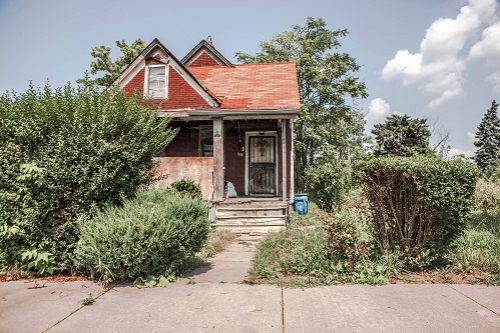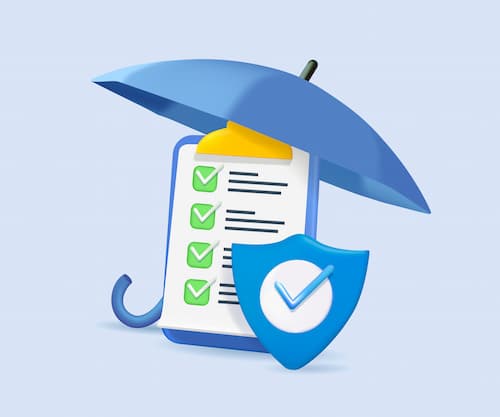- Why are flood insurance rates going up?
- What is FEMA Risk Rating 2.0?
- How does FEMA Risk Rating 2.0 work?
- Does anything stay the same under Risk Rating 2.0?
- What areas of the country will see the biggest flood insurance changes?
- How much will my NFIP rates go up?
- How will flood insurance premiums change in counties with the most flood insurance policies?
- FAQ: FEMA Risk Rating 2.0
Why are flood insurance rates going up?
Flood insurance rates have been rising for many homeowners since FEMA transitioned to Risk Rating 2.0.
According to FEMA, the new methodology lets it fairly distribute premiums for policyholders based on the value of their home and their property’s unique flood risk. Before the change, many policyholders with lower-value homes paid more than they should while others with higher-value homes paid less.
The new methodology uses various tools to incorporate more flood risk variables, such as flood frequency, distance to a water source, a property’s elevation and the home’s replacement cost. This new data results in more accurate ratings and, in many cases, higher flood insurance rates.
In addition to the FEMA changes, climate change has resulted in more frequent and severe storms, leading to more flood claims that almost always result in higher premiums.
In 2022, 18 climate disasters in the U.S. resulted in more than $1 billion in damage. These 18 disasters caused $171.5 billion in damage and resulted in 474 fatalities. The past five years have seen the U.S. experience an average of 17.8 natural disasters that cause more than a billion dollars in damage annually. As severe weather becomes more frequent, flood insurance rates will continue to rise.
It’s worth noting that flood insurance rates have been subsidized for decades and have not reflected the property’s actual risk. Risk Rating 2.0 is designed to correct that.
What is FEMA Risk Rating 2.0?
FEMA simply changed how it calculates flood insurance premiums for the NFIP and the agency is calling the new system Risk Rating 2.0. The former methodology for calculating flood insurance premiums had not changed significantly since 1968.
Before Risk Rating 2.0, premiums were determined by where a home fell on FEMA's flood insurance rate map and the property’s elevation – taking no other risk factors into account – which resulted in premiums that often fell far below the actual cost to insure the home. Due in part to climate change and more frequent and destructive storms, the NFIP decided that the old method for calculating flood insurance premiums was no longer viable.
Risk Rating 2.0 considers various risk factors, which should result in premiums that more accurately reflect the risk of flooding for a given property.
While the new rating system has pushed up the average flood insurance rate in every state, not all homeowners will see an increase. The new rating factors have increased the cost of flood insurance for some homeowners while others have seen their rates drop.
How does FEMA Risk Rating 2.0 work?
Risk Rating 2.0 is designed to make premiums more equitable. It incorporates private sector data sets, catastrophe models and evolving actuarial science to rate the risk of flooding to a home. Flood insurance premiums now reflect more of the real risk the home presents.
FEMA's rating methodology had not changed in decades and was based on static data, such as a home's elevation and where the property landed on the FEMA flood zone map.
Risk Rating 2.0 changes that by considering a variety of variables and risk factors when setting a flood insurance premium. It no longer only looks at a home's location on a flood map, but includes other factors that can lead to flooding, such as:
- Nearby rivers that may overflow
- Frequency and severity of storm surge
- Frequency of heavy rain
- Local coastal erosion
- Distance from a water source
- The size of the home and the cost to rebuild
Who is setting these rates?
FEMA developed the new flood insurance rates using various data sources. The data, according to a Congressional Research Service summary, take into consideration existing NFIP map data, NFIP policy and claims data, the United States Geological Survey 3-D elevation data, National Oceanographic and Atmospheric Administration (NOAA) storm surge data, as well as U.S. Army Corps of Engineers datasets.
While FEMA collects the data and sets the rates, policies are sold via the National Flood Insurance Program. FEMA underwrites flood insurance coverage and administers the NFIP in partnership with the federal government, the property insurance industry and state and local officials.
The NFIP is currently the largest single-line insurance program in the country with more than 5 million policyholders nationwide and roughly $1.3 trillion in flood insurance coverage on the books.
Does anything stay the same under Risk Rating 2.0?
A couple of significant components of NFIP policies haven’t changed. Under Risk Rating 2.0, the requirement to purchase flood insurance if your home is in a high-risk flood area or a Special Flood Hazard Area stays the same. In addition, lenders still have the right to require flood insurance on properties they hold a mortgage on if they deem it a flood risk.
The federal premium cap that limits rate increases to 18% per year also stays in place. This means that some homeowners, the ones that are facing the largest increases, will see their rates climb 18% a year until their premium reflects the actual risk of the property.
FEMA continues to offer premium discounts for preFIRM subsidized and newly mapped properties, and policyholders can still transfer their discount to a new owner when selling their property. A PreFIRM building is one in which construction or substantial improvement was made on or before Dec. 31, 1974, or before the effective date of an initial Flood Insurance Rate Map (FIRM), according to FEMA.
What areas of the country will see the biggest flood insurance changes?
In general, states where severe weather is common will see the biggest increases in flood insurance costs. These states, according to FEMA data, will see 80% or more of their policyholders paying more, with some increases already in place:
- Hawaii: 87% of all NFIP policyholders will see a premium increase.
- Texas: 86% will see an increase.
- Mississippi: 84% will see an increase.
- West Virginia: 83% will see an increase.
- Florida and Louisiana: 80% of policyholders in these two states will see an increase.
As FEMA switched to Risk Rating 2.0, FEMA released a dashboard showing projected premium changes for all NFIP policies, including commercial and homeowner policies by ZIP code. The data also breaks down rate increases for just homeowners, removing the commercial numbers.
The data is presented by percentage increase as well as dollar amount change. When it comes to a straight dollar amount increase, Hawaii was the big loser seeing a shocking $2,215 rate increase on average.
Here are the top five states where rates will climb the most as well as the average amount of the annual increase:
- Hawaii: $2,215
- West Virginia: $1,941
- Maine: $1,747
- Connecticut: $1,410
- New Hampshire: $1,328
When it comes to a percentage increase, the top five are made up of many of the same states in a slightly different order:
- Maine: 183.2%
- West Virginia: 171.2%
- Hawaii: 154.1%
- Mississippi: 149.1%
- Louisiana: 134.1%
On the other side of the coin, rates in Washington, D.C., will go up a mere $3 on average. The following are the top five states with the most minor increases:
- Utah: $308
- Michigan: $257
- Maryland: $134
- Alaska: $90
- Washington, D.C.: $3
Just like dollar amount increases, the percentage increases involved many of the same states:
- Rhode Island: 41.5%
- Michigan: 31.7%
- Maryland: 22%
- Alaska: 19.8%
- Washington, D.C.: 0.8%
How much will my NFIP rates go up?
Your specific rate increase or decrease will vary depending on your home’s location and other risk factors.
However, the FEMA dashboard does break down the rate increases and decreases due to the new rating system. According to the data, nationally, single-family homeowners will see the following:
- 71.5% will see an increase of up to $10 per month
- 6.9% of current policyholders will experience a $10 to $20 per month increase
- 2.9% will see a monthly increase of more than $20
- 18.6% of current policyholders will experience a premium decrease
The FEMA dashboard offers a variety of information, including the breakdown of rate increases by state and details about increases (and decreases) that exceed $20 a month.
As an example, homeowners in Colorado can expect the following according to the dashboard:
- 36.9% of single-family homes will see their flood insurance premium decline
- 57% will see a flood insurance premium increase of between $0 to $10
- 4.1% will see a flood insurance premium increase of between $10-$20
- 2% will see a flood insurance premium increase of over $20
The good news is that most homeowners won’t be paying more than $20 extra a month nationally. The dashboards show that a mere 0.1% will see a rate increase of $100 or more.
Is there a chance my rates could decline?
Yes, absolutely. As stated, FEMA estimates that 23% of all policyholders and 18.6% of single-family homeowners will experience a premium decrease under Risk Rating 2.0. Homes located farther away from a body of water will most likely see a decline, as will smaller homes.
How will flood insurance premiums change in counties with the most flood insurance policies?
Counties and states with a large number of flood insurance policies on the books will see more premium increases than states or counties with fewer policies. This is because there are likely many more flooding risks in states where flood insurance is widespread.
For example, according to FEMA data, Florida has the largest number of NFIP policies, with roughly 1.7 million in force across the state. FEMA predicts that only 12.4% of single-family home policies will see a rate decrease, while 87.6% of homeowners will see a rate increase. Luckily, 72.1% of those increases will be $10 or less.
On the other hand, in Alaska, which only has 2,300 policies in force, a whopping 86.9% of homeowners will see their premiums decrease. If you are looking for information regarding your state, the FEMA dashboard is a great tool.
FAQ: FEMA Risk Rating 2.0
What is the difference between preferred and regular flood insurance?
The big difference between a preferred risk policy and a regular flood insurance policy is the price you pay for coverage. The coverage provided by the policy is the same. All things being equal, you will pay a lower premium for a preferred risk policy than a standard policy. This is because preferred-risk homes are located in areas that are less likely to experience a flood loss.
However, you must qualify for a preferred policy. To qualify, your home must be in the moderate-risk B, C, and X zones in the National Flood Insurance Program (NFIP) Regular Program communities. In addition, it cannot be in a Special Flood Hazard Area (SFHA).
What is not changing under Risk Rating 2.0?
There are a few things that are staying the same. Under federal law, the property owner must purchase flood insurance if a home is located in a high-risk flood area or a Special Flood Hazard Area.
In addition, the rate increase limit is still in effect, meaning premiums on an NFIP policy can only increase by 18% per year. However, if your home is a high-risk property, there is a good chance your premium will increase 18% a year until the premium matches the risk the property presents.
The last thing to stay the same is the coverage limits for each policy. NFIP has always had limits to its coverage, which means that if you cannot purchase enough coverage to insure your home fully, you may have to supplement it in the private market.
Current NFIP coverage limits are:
- The maximum for residential structures for a family of one to four is $250,000 in building coverage and $100,000 in contents coverage. For residential structures of five or more units, the maximum is $500,000 in building coverage and $100,000 in contents coverage.
- The maximum for businesses is $500,000 in building coverage and $500,000 in contents coverage.
When did Risk Rating 2.0 go into effect?
It has been in effect for over a year with rate increases starting in April of 2022.
Why should policyholders renew their flood policy?
Regardless of whether you see a premium increase or decrease, you should absolutely renew your flood insurance policy if your home is at risk for flooding. In some cases, it may be mandatory. Federal law requires it if your home is in a high-risk flood area or a Special Flood Hazard Area. Even if the feds don't require it, your lender may, if it is uncomfortable with the flood risk of your home, require flood insurance.
Flood insurance policies take 30 days to take effect. If you let your policy lapse, you will be without coverage for at least 30 days while you wait for a new policy to provide coverage.




